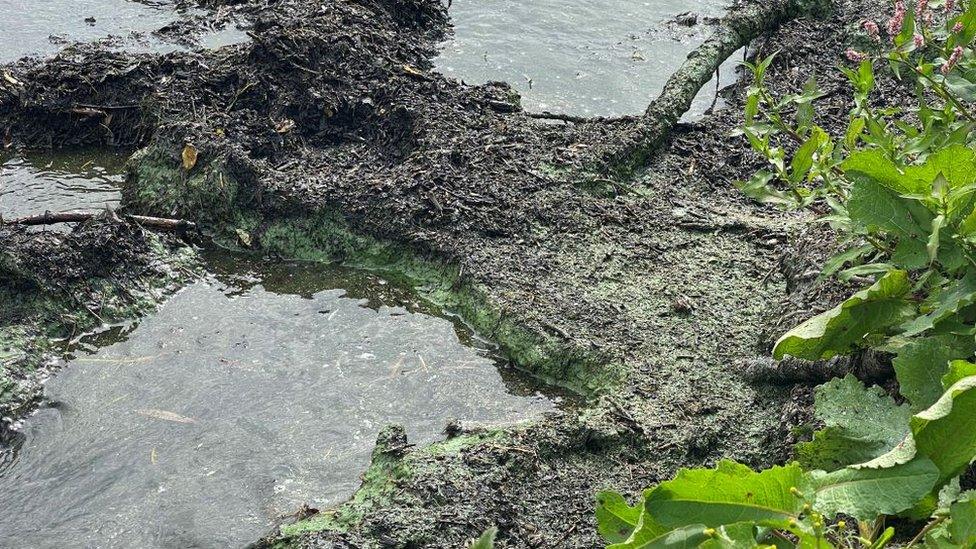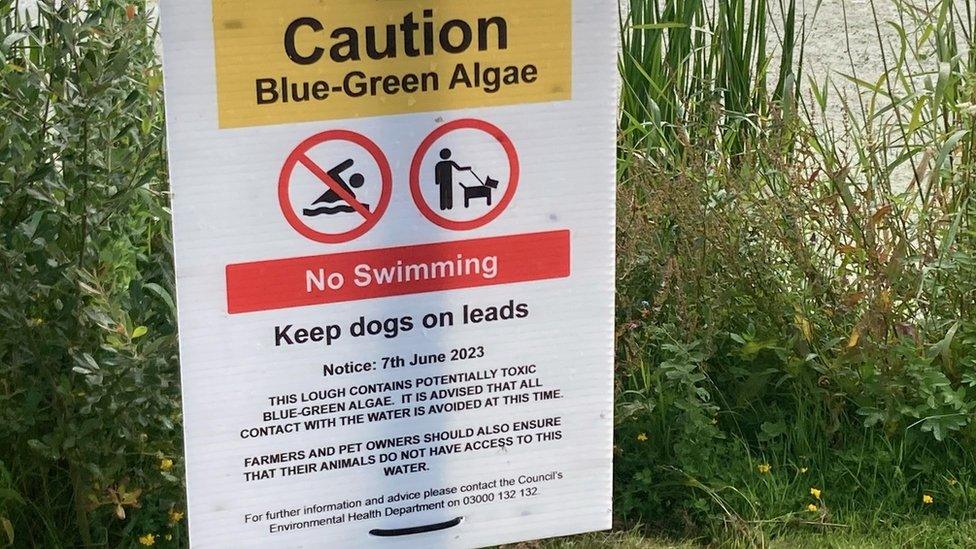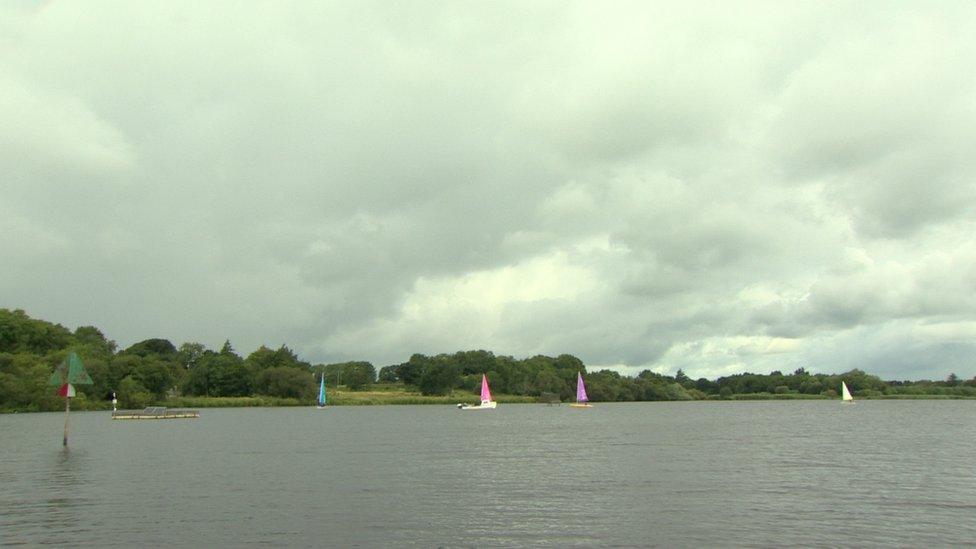Lough Neagh: Largest freshwater lake in UK and Ireland threatened by toxic algae
- Published
- comments

This is what blue-green algae looks like in the water. Can you spot the colour?
Environmental campaigners in Northern Ireland are worried about pollution in a large lake called Lough Neagh.
The water from Lough Neagh provides half of Belfast's drinking water and around 40% for the rest of Northern Ireland.
It's the biggest freshwater lake in the whole of the UK and Ireland.
There has been a big bloom of blue-green algae in Lough Neagh this summer, which is harmful to the wildlife that lives in and around it, and anyone who enters the water.

Environmental campaigners held a special protest at the Lough asking for help
Although it's called an algae, it's actually a bacteria called cyanobacteria.
It appears naturally in our lakes, rivers, ponds and canals. When the bacteria group together they form blue-green clumps that you can see in the water.
When algae grows, it's called a bloom.
The algae blooms happen naturally in some waters, but the way water is managed around it can affect it.
Pollutants containing a chemical called phosphate make the blooms worse.
Why are people worried about Lough Neagh?

Lough Neagh provides lots of drinking water to Northern Ireland. Around half of the drinking water in Belfast is from the lough.
Blue-green algae can be dangerous if swallowed, and it can cause a rash on your skin if touched. It's dangerous for wildlife living in and around the lake too.
Swimmers have also had to stop going in the water, as blue-green algae is dangerous for your health.
Mary O'Hagan, founder of a swimming group which regularly uses the lough, said her health had suffered as a result of being unable to swim there.
"I had this wonderful community around me... and that has just been devastated by this."
Anyone catching fish in the lake has been told to throw the fish back in.
Businesses who use the water - such as watersport companies - have been forced to close because people are not allowed to use the water.

Swimmers at Ballyronan on the edge of Lough Neagh were told not to swim in the water earlier this year
This isn't the first problem Northern Ireland has had with blue-green algae this year - lots of beaches up the north coast were closed for swimmers this summer due to blooms.
Why has there been so much blue-green algae this year?
Around twenty years ago species of mussel - called the zebra mussel - had a huge population growth in the lough.
These mussels filtered the water, making it clearer. This meant when sunlight hit the water, it heated the lough more easily.

Blue-green algae multiplies and spreads in warm conditions. The campaigners say the temperature of the lake has risen by 1C since 1995.
As well as the heat those concerned about the lake say chemicals, like fertilizers from farming and gardens, are released into the water alongside sewage from septic tanks - helping the toxic bacteria grow and flourish.
The Department of Agriculture, Environment and Rural Affairs (DAERA) in Northern Ireland says it has a range of programmes to improve water quality and is working with 'partners and stakeholders'.
WATCH: If you are upset by the news, here is some advice to help you.
If you're upset about the news, click here to for advice.
What can be done about blue-green algae in Lough Neagh?
Environmental campaigners say that allowing polluting substances into the water makes the situation worse. They're asking for authorities and those in power to do more to make sure the water stays clean.
However there hasn't been a functioning government in Northern Ireland since February 2022.
Northern Ireland is part of the UK but the Northern Ireland assembly is in charge of things like farming - agriculture - and the environment.
This means it could be harder to tackle the algae by stopping pollutants entering the lough from farming and sewage.
You can find out more about Northern Ireland and how the government works here.
Campaigners are angry and worried that the lough may never recover from the algae blooms - this weekend a big protest was held at the lough to raise awareness of the problem.
- Published10 April 2023

